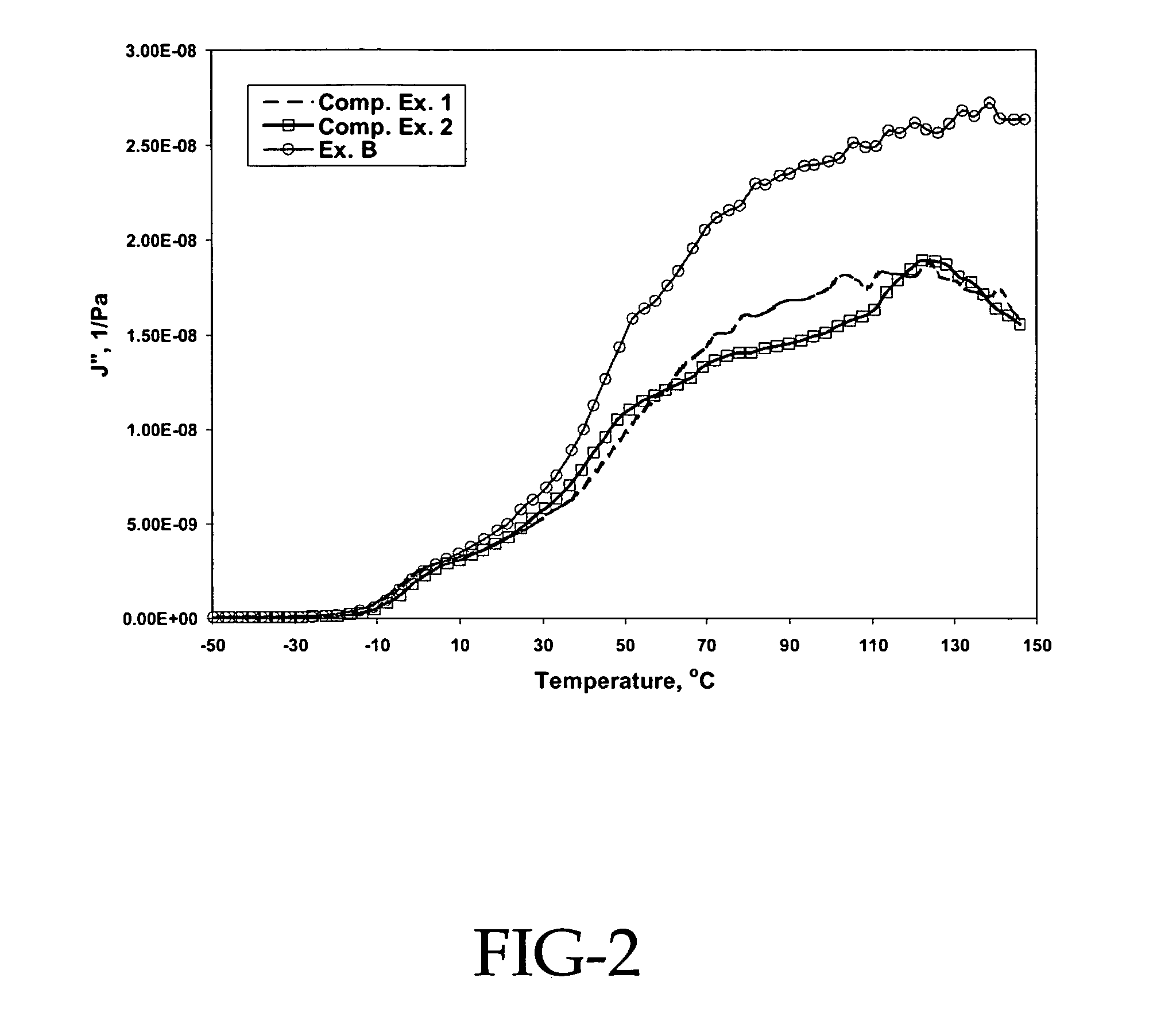Rubber composition containing resinous nanopractice
a technology of resinous nanoparticles and compositions, which is applied in the field of resinous nanoparticle compositions in rubber compositions, can solve the problems of high grip, and achieve the effects of improving handling performance, high glass transition temperature (tg), and improving controllability and stability
- Summary
- Abstract
- Description
- Claims
- Application Information
AI Technical Summary
Benefits of technology
Problems solved by technology
Method used
Image
Examples
example 1
Preparation of Crosslinked Polymethyl methacrylate Particle
[0069]A glass quart bottle with a rubber septum and Teflon liner was charged with a soap solution composed of 421.63 grams of reverse osmosis (RO) water, 9.57 grams of a 23% solution of dodecyl benzene sulfonic acid sodium salt. The pH of the soap solution was adjusted to 10.5–11.0 with a 20% potassium hydroxide solution.
[0070]Then, 198.00 grams of methyl methacrylate and 2.20 to 22.00 grams of ethyleneglycol dimethacrylate (abbreviated as EGDMA) were added to the bottle and the mixture was purged with nitrogen gas for 3 minutes to remove oxygen. The bottle was sealed. The sealed bottle was placed in a 50° C. water bath and rotated at 20 revolutions per minute. When the contents of the bottle reached the bath temperature, 0.33 grams of potassium persulfate was added. The reaction was allowed to proceed until the solids content reached a plateau of 33% solids. The particle size was determined by light scattering and fit to a ...
example 2
Preparation of the Compounded Mixture
[0072]Mixing of the particle / polymer blends was accomplished in two stages according to the recipe listed in Table 1. The first stage (non-productive) involved adding all the polymer to a 55 cc Haake Rheomix 90 equipped with a throat, with all the temperature control zones set at 145° C., Banbury rotors, and a mixing rate of 40 rpm. After the polymer is added to the mixer, the other ingredients of the non-productive except the oil are added. Then oil was added. The ram was lowered and the material was mixed for 7 minutes ensuring that the temperature did not exceed 160° C.
[0073]The productive mix was run under the same conditions except that the temperature zones of the mixer were controlled at 90° C. One-half of the mixed non-productive material was added to the mixer followed by the productive ingredients, and the second half of the non-productive. The ram was lowered and the material was mixed for 1.5 minutes with the temperature not to exceed...
example 3
Compounded Properties
[0075]According to the procedure described in Example 2, rubber compositions were prepared with the addition of different resinous particles listed in Table 2. Both mechanical and dynamic properties were measured and compared with the compound without resinous particles (Comp. Ex. 1) in Table 2.
[0076]
TABLE 2Comp.Ex. AEx. BEx. CEx. 1Tg (° C.)12514075—100% modulus, Mpa (100° C.)0.680.660.580.60200% modulus, Mpa (100° C.)1.141.071.041.00300% modulus, Mpa (100° C.)1.911.751.911.68Tanδ at 100° C.0.2360.2270.2270.205Tanδ at 130° C.0.2250.2060.2000.178J″ at 100° C., 10−8 1 / Pa2.012.412.151.75J″ at 130° C., 10−8 1 / Pa2.332.612.361.79Ex. A = polymethyl-methacrylate (abbreviated as PMMA) particle with 1% crosslinking monomer EGDMA;Ex. B = PMMA particle with 10% EGDMA;Ex. C = particle of PMMA core with polystyrene shell;Comp. Ex. 1 = no resinous particle.
[0077]The tests were carried out on strip-shaped test samples having a width of 6.3±0.05 mm, a thickness of 0.5±0.05 mm an...
PUM
| Property | Measurement | Unit |
|---|---|---|
| mean particle size | aaaaa | aaaaa |
| glass transition temperature | aaaaa | aaaaa |
| mean particle size | aaaaa | aaaaa |
Abstract
Description
Claims
Application Information
 Login to View More
Login to View More - R&D
- Intellectual Property
- Life Sciences
- Materials
- Tech Scout
- Unparalleled Data Quality
- Higher Quality Content
- 60% Fewer Hallucinations
Browse by: Latest US Patents, China's latest patents, Technical Efficacy Thesaurus, Application Domain, Technology Topic, Popular Technical Reports.
© 2025 PatSnap. All rights reserved.Legal|Privacy policy|Modern Slavery Act Transparency Statement|Sitemap|About US| Contact US: help@patsnap.com



